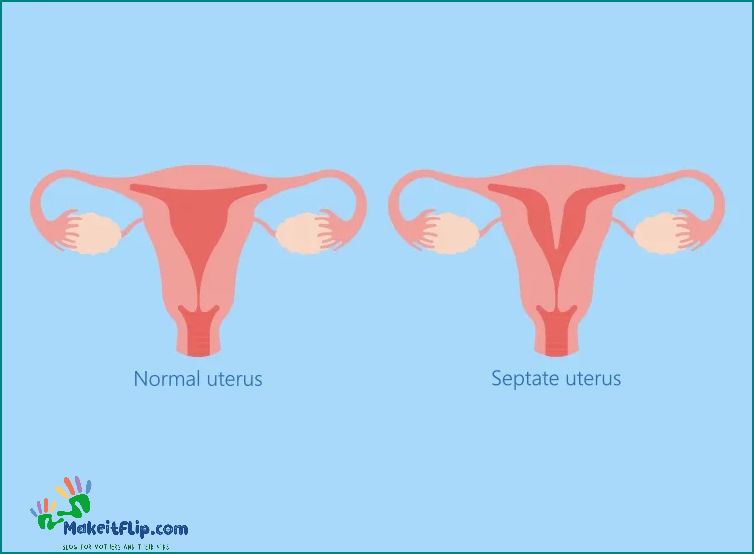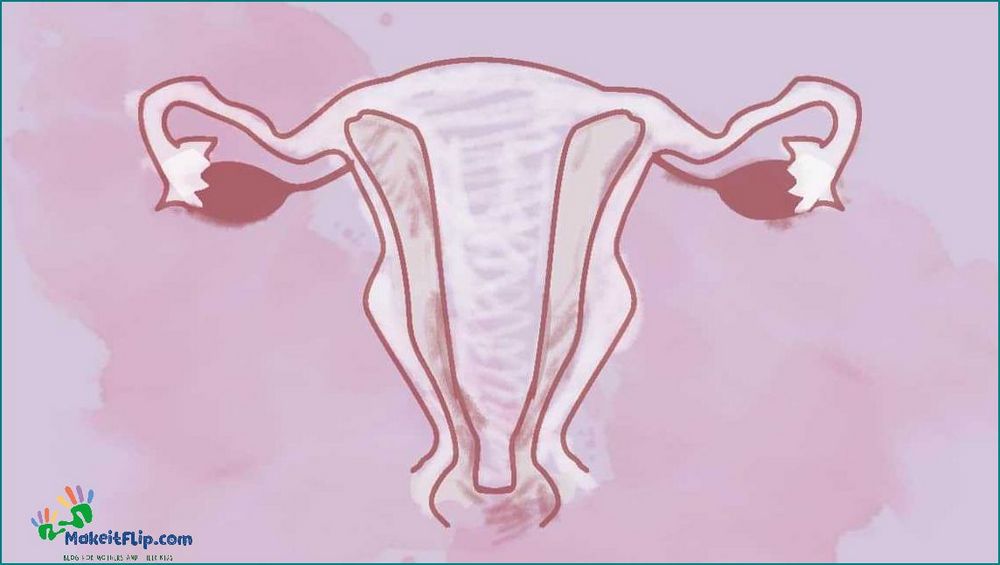Contents
Exploring the Causes, Symptoms, and Treatment of Septic Uterus: A Comprehensive Guide

The uterus, also known as the womb, is a vital organ in the female reproductive system. It plays a crucial role in the menstrual cycle, pregnancy, and childbirth. However, like any other organ, the uterus can be affected by various conditions and infections, one of which is septic uterus.
Septic uterus, also referred to as uterine infection or pelvic inflammatory disease, is a serious medical condition that occurs when bacteria or other pathogens invade the uterus. This infection can lead to inflammation, tissue damage, and potentially life-threatening complications if left untreated.
There are several causes of septic uterus, including childbirth-related infections, sexually transmitted infections, and post-surgical infections. In some cases, the infection may spread from other nearby organs, such as the fallopian tubes or ovaries.
Common symptoms of septic uterus include pelvic pain, abnormal vaginal discharge, fever, chills, and a general feeling of being unwell. If you experience any of these symptoms, it is essential to seek medical attention promptly to prevent the infection from worsening.
Treatment for septic uterus typically involves a combination of antibiotics to eliminate the infection and supportive care to manage symptoms. In severe cases, hospitalization may be necessary for intravenous antibiotic therapy and close monitoring.
Causes of Septic Uterus

A septic uterus, also known as uterine infection, can be caused by various factors. The most common cause is an infection that occurs after childbirth or a miscarriage. During these events, bacteria can enter the uterus through the cervix and cause an infection.
Other causes of septic uterus include:
- Sexually transmitted infections (STIs): Infections such as chlamydia or gonorrhea can spread to the uterus and cause an infection.
- Unsterile medical procedures: If medical instruments or equipment used during procedures such as abortions or gynecological surgeries are not properly sterilized, they can introduce bacteria into the uterus.
- Complications from intrauterine devices (IUDs): Although rare, IUDs can sometimes lead to infections if they are not inserted correctly or if they are left in place for too long.
- Poor personal hygiene: Not maintaining proper hygiene, such as not washing hands before inserting tampons or during vaginal douching, can increase the risk of developing a uterine infection.
- Weak immune system: Individuals with weakened immune systems, such as those with HIV/AIDS or undergoing chemotherapy, are more susceptible to infections, including septic uterus.
If left untreated, a septic uterus can lead to serious complications, such as pelvic inflammatory disease, infertility, or even sepsis. It is important to seek medical attention if you experience symptoms of a uterine infection.
Infection after childbirth

After giving birth, it is possible for the uterus to become infected. This condition, known as septic uterus, can occur due to various factors such as prolonged labor, multiple vaginal examinations during labor, or the presence of bacteria in the birth canal.
Symptoms of infection after childbirth may include fever, abdominal pain, foul-smelling vaginal discharge, and an overall feeling of illness. It is important to seek medical attention if these symptoms are present, as untreated infections can lead to serious complications.
Treatment for infection after childbirth typically involves antibiotics to fight the infection and relieve symptoms. In some cases, hospitalization may be necessary for more intensive treatment and monitoring.
Prevention of infection after childbirth can be achieved by maintaining good hygiene practices, such as washing hands before and after touching the baby or the mother’s genital area. It is also important to attend regular prenatal check-ups and follow any postpartum care instructions given by healthcare professionals.
Overall, infection after childbirth is a serious condition that requires prompt medical attention. By being aware of the symptoms and practicing good hygiene, the risk of developing a septic uterus can be minimized.
Complications from abortion

Abortion is a medical procedure that can have potential complications, including septic uterus. A septic uterus occurs when bacteria infect the uterus after an abortion. This can lead to symptoms such as fever, abdominal pain, and foul-smelling discharge.
If left untreated, septic uterus can lead to serious complications, including pelvic inflammatory disease, sepsis, and infertility. It is important to seek medical attention if you experience any symptoms of infection after an abortion.
Treatment for septic uterus typically involves antibiotics to clear the infection. In severe cases, hospitalization may be necessary for intravenous antibiotics and other supportive care.
Prevention of septic uterus can be achieved by ensuring that abortions are performed in a safe and sterile environment. It is important to choose a reputable healthcare provider and follow all post-abortion care instructions to minimize the risk of infection.
In conclusion, septic uterus is a potential complication of abortion that can have serious consequences if left untreated. It is important to be aware of the symptoms and seek medical attention promptly if an infection is suspected.
Sexually transmitted infections
Sexually transmitted infections (STIs) are infections that are transmitted through sexual contact, including vaginal, anal, and oral sex. These infections can affect various parts of the reproductive system, including the uterus.
STIs can be caused by bacteria, viruses, or parasites. Some common STIs that can affect the uterus include:
- Chlamydia: This bacterial infection can cause inflammation in the uterus, leading to pelvic inflammatory disease (PID) if left untreated.
- Gonorrhea: Another bacterial infection that can cause inflammation and damage to the uterus if not treated.
- Human papillomavirus (HPV): This viral infection can lead to the development of cervical cancer, which can affect the uterus.
- Herpes: This viral infection can cause genital sores and ulcers, which can affect the uterus if left untreated.
- Trichomoniasis: This parasitic infection can cause inflammation in the uterus and other reproductive organs.
It is important to practice safe sex and get regular screenings for STIs to prevent the transmission and complications of these infections. If you suspect you have an STI or are experiencing symptoms such as abnormal vaginal discharge, pelvic pain, or pain during sex, it is important to seek medical attention for diagnosis and treatment.
Symptoms of Septic Uterus

The symptoms of a septic uterus can vary depending on the severity of the infection. Some common symptoms include:
- Fever
- Chills
- Abdominal pain
- Lower back pain
- Heavy or foul-smelling vaginal discharge
- Irregular or heavy menstrual bleeding
- Painful urination
- Painful sexual intercourse
- General feeling of illness or malaise
If you are experiencing any of these symptoms, it is important to seek medical attention as soon as possible. A septic uterus can be a serious condition that requires prompt treatment to prevent complications.
Fever and chills
One of the most common symptoms of septic uterus is the presence of fever and chills. When the uterus becomes infected, the body’s immune system responds by increasing its temperature to fight off the infection. This results in a fever, which is often accompanied by chills.
The fever associated with septic uterus can range from mild to high, and it may come and go or persist for a prolonged period of time. The chills, on the other hand, are often described as a feeling of coldness or shivering, even when the body is warm.
If you experience fever and chills, it is important to seek medical attention as soon as possible. These symptoms may indicate a serious infection in the uterus, which can lead to complications if left untreated.
It is important to note that fever and chills can also be symptoms of other conditions, so a proper diagnosis is essential.
If you are diagnosed with septic uterus, your healthcare provider will determine the appropriate treatment plan based on the severity of your infection. This may include antibiotics to fight off the infection, as well as other supportive measures to help manage your symptoms.
Remember, early detection and treatment of septic uterus is crucial for a successful recovery.
FAQ about topic Understanding Septic Uterus Causes Symptoms and Treatment
What is a septic uterus?
A septic uterus is a condition in which the uterus becomes infected, usually as a result of bacteria entering the uterus during childbirth or after a miscarriage or abortion.
What are the causes of a septic uterus?
The main causes of a septic uterus are childbirth, miscarriage, and abortion. Other risk factors include a weakened immune system, certain medical conditions, and the use of certain medical devices.
What are the symptoms of a septic uterus?
The symptoms of a septic uterus may include fever, abdominal pain, foul-smelling vaginal discharge, heavy bleeding, and a general feeling of illness. In severe cases, septic shock can occur.
How is a septic uterus diagnosed?
A septic uterus is usually diagnosed through a combination of physical examination, medical history, and laboratory tests. These tests may include blood tests, urine tests, and imaging studies such as ultrasound.
What is the treatment for a septic uterus?
The treatment for a septic uterus typically involves antibiotics to fight the infection, as well as supportive care to manage symptoms. In some cases, surgery may be necessary to remove infected tissue or drain abscesses.
I’m Diana Ricciardi, the author behind Makeitflip.com. My blog is a dedicated space for mothers and their kids, where I share valuable insights, tips, and information to make parenting a bit easier and more enjoyable.
From finding the best booster seat high chair for your child, understanding the connection between sciatica and hip pain, to exploring the benefits of pooping in relieving acid reflux, I cover a range of topics that are essential for every parent.
My goal is to provide you with practical advice and solutions that you can easily incorporate into your daily life, ensuring that you and your child have the best possible experience during these precious years.
